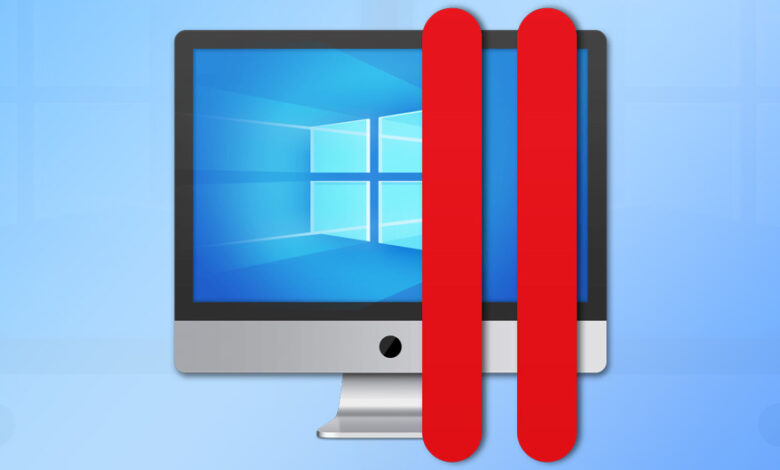Is a Mac Your Next Windows PC?

An interesting thought occurred to me while I was on Thanksgiving vacation, thousands of miles away from my home in Silicon Valley. While I perform much of my work on a 2021 M1-based MacBook Pro, I sometimes need access to a Windows PC for specific applications that are unavailable on macOS.
My recent problem was that my Dell XPS 13 Plus was back in California because I didn’t want to lug two laptops with me on vacation. I suspect I’m not the only one who faces that challenge.
While Apple’s macOS has grown in sophistication and capability over the past decade — particularly if you have an iPhone or iPad and enjoy the “ecosystem” benefits — many users may need access to Windows-only apps. Or, more commonly, features that may not be available in macOS versions of these apps. The latter is the category that I fall into regularly.
Most companies have embraced both macOS and Windows and give users a choice at a business level, even though Windows is the predominant OS in the corporate space. After all, Windows PCs are generally much more affordable than their Mac peers. Windows PCs also are somewhat easier to manage and secure from an enterprise fleet standpoint, a selling point that appeals strongly to CIOs.
Windows Apps Can Differ From Mac Counterparts
Although the number is not huge, some Windows apps do not have equivalent macOS versions. Many of these apps are relatively niche as they are development tools or applications specifically written for Windows. In all likelihood, this is an issue that won’t affect most mainstream users.
Legacy apps like Pinnacle Systems’ Studio, a video editing app that has been around for over a decade, do not have an equivalent macOS version. It’s always good practice to make sure you’re using an app that is both available on macOS and Windows.
Yet, frustrating issues can result even when an app appears to be available for both macOS and Windows. For example, some feature nuances in Microsoft Office apps: no universal inbox support in the Windows version of Outlook and the inability to place an embedded YouTube player in the Windows versions of Word and PowerPoint.
These links will help explain some specific feature differences between the Mac and Windows versions of Office 365 apps: Outlook | PowerPoint.
Candidly, the list of differences in features is not huge, but these distinctions can be annoying, so having access to the Windows version of Outlook can be helpful.
Based on my conversations with Microsoft insiders, the company’s ultimate goal is to have complete feature equivalence between the macOS and Windows versions. However, in my view, that may not happen for a lengthy period of time.
All of this leads to my contention that having the ability to run Windows on a Mac is always a convenient backup plan should you have to get access to a native Windows app.
Bootcamp Great, With Limitations
Apple realized that predicament in 2006 when it released Boot Camp. At the time, the macOS market share was much smaller than today, and it didn’t enjoy Windows’ massive app availability.
Boot Camp provides the capability to create a dual boot, where you can easily use either Windows or macOS, though not at the same time.
For some users, this is an appealing solution. But there are a couple of significant challenges with this approach.
First, you won’t be able to hop back and forth between Windows and macOS to share content in real-time. More importantly, Boot Camp only works with Intel-based Macs. This scenario is less appealing as Apple has explicitly messaged that its desktop and laptop future will run Apple silicon, starting with the M1 chip.
So, if you have recently purchased a Mac with an M1 or M2 processor, the Boot Camp option is unavailable to you.
Parallels Offers Best of Both Worlds
For the past several years, I’ve used Parallels, a popular software utility that permits you to use Windows on a Mac by creating what’s known as a virtual machine. Technically, the Mac shares the computer’s resources with the Parallels virtual machine(s) and allows the Mac to operate as a standalone device.
This approach has several advantages. Right off the bat, Parallels allows you to run multiple operating systems, not just Windows. You can also use the various iterations of Linux, though that might be “advanced dance lessons” for most mainstream users who simply need occasional access to Windows.
The other benefit I find delightful is that Parallel removes the requirement to boot into either Windows or macOS. Parallels has a terrific feature called “Coherence mode,” which allows you to run Windows programs within the macOS environment.
However, for usability reasons, you might simply want to run Windows in a separate window (no pun intended). You can also easily copy, cut, and paste content, such as files, images, videos, etc., between both operating systems.
Mac notebook using Parallels to run the Windows 11 operating system in a dedicated window in macOS. (Image Credit: Parallels International)
Parallels is not the only software utility on the market that can perform this trick. VMware offers a comparable utility called Fusion. But Parallels’ advantage over Fusion is that it works on both Intel and Apple M-based Mac devices.
Analyst Thoughts
I believe the ability to run Windows on a Mac is one of the most unheralded stories in the PC space and deserves more attention.
As I’ve written before, this convenience attribute falls into the category of “How did I live without this capability?” I don’t consider this hyperbole, as many consumers can’t afford a Mac and a Windows PC. Often, it’s an either/or situation dictated by affordability considerations.
While I don’t use Parallels every day, the convenience of accessing Windows apps without requiring a separate PC has been a game-changer for me.
What’s also surprising to me is that Windows runs smoothly on a Mac. While the major PC OEMs (mainly HP, Dell, and Lenovo) have made great strides in improving the overall user experience with driver and firmware updates, I’ve encountered my fair share of upgrade challenges when updating Windows.
Because Parallels runs as a virtual machine on your PC, Windows seems to run more smoothly without the “hiccup” issues that driver updates will occasionally cause.
Some Exceptions
Nonetheless, running Windows on a Mac using Parallels isn’t for everyone. If you’re a hardcore gamer, this approach won’t cut it, as most popular PC games require discrete graphics and multi-core processors from Intel or AMD that the virtual machine approach is simply not optimized to address.
I also would not recommend Parallels to Windows users who are video content professionals, as those Windows apps running under Parallels will likely disappoint from a performance standpoint.
In addition, keep in mind that if you have an Apple Silicon-based Mac, it will only run the Arm-based version of Windows, which has limitations. Drivers for hardware, games, and apps will only work if designed for the Arm version of Windows. From a practical point of view, 64-bit (x64) apps won’t work. You’ll need to be prudent and check if a specific Windows app requires 64-bit support.
Nevertheless, there is a significant number of mainstream users with basic Windows productivity application requirements, which can easily be satisfied with the capability that Parallels provides for Mac users.
Interestingly, while overall PC growth has stagnated over the past couple of quarters following the pandemic-related market surge in 2020, 2021, and early 2022, Apple has continued to grow its share, despite significantly higher prices for its computers versus comparably configured PCs.
Apple’s Ecosystem Advantage
The tight integration between the iPhone, iPad, and Mac continues to resonate with many users. One great example of this ecosystem strength is the exclusive native text/SMS messaging support on Macs, which is unavailable on Windows platforms.
If you are an Android smartphone user, the Apple ecosystem benefit goes away as numerous apps permit you to access Android text/SMS messages on your Mac.
Mac users know what I mean when they consider the convenience of using the keyboard on a computer to send an iMessage or SMS. Apple, in my view, is unlikely to ever give away the “keys to the kingdom” for that specific feature.
Parallels Productivity Perks
Putting the ecosystem element aside, more Mac users should consider using Parallels to expand their overall productivity if they need routine access to Windows.
At $99 for the Parallels standard edition, it’s an inexpensive way to avoid purchasing a dedicated Windows PC — and that scenario may ultimately be the one that scares the dickens out of the big PC manufacturers.
Will using Parallels eliminate the need to purchase an independent Windows laptop? The answer is not clear-cut because of the caveats I’ve detailed above. If you’re a “power” Windows user, you may require much more performance than a virtual Windows experience provides.
However, the reality is there are a non-trivial number of Mac users with occasional access to Windows for productivity applications that can benefit from a virtual operating system experience to avoid the hassle and expense of owning a separate Windows PC.
Get Best News and Web Services here







